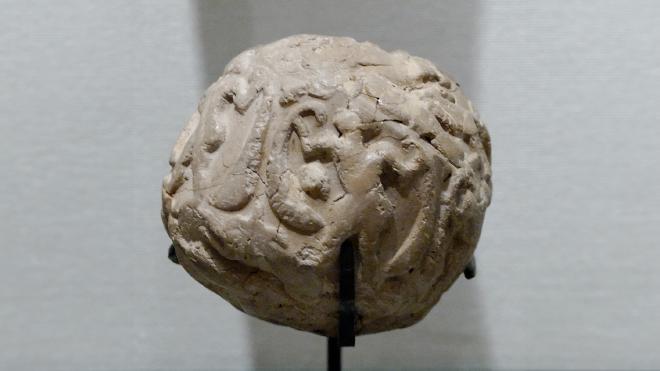Join us as we explore the ways data have been visualized throughout history, from ancient times to the modern era.
Today we look at Sumerian clay tokens and tablets, which were used at least 6000 years ago and eventually developed into the first writing system.
Clay tokens and bullae envelopes. #
Before they invented cuneiform, the Sumerians used clay tokens as a tally system. Clay shaped into different shapes and sizes were used to represent various quantities.

Credit: Marie-Lan Nguyen / Wikimedia Commons / CC-BY 2.5; Musée du Louvre, France. Image source.
Final tallies were then stored inside of clay containers called bullae, which functioned as a kind of envelope. Bullae were marked on the outside to indicate their contents, allowing them to be ‘read’ without breaking them open first.

Credit: Daderot; Oriental Institute Museum, Chicago, Illinois, United States. Image source.
Seems a bit much, right?
Clay tablets. #
Eventually, this complex token and bullae system was replaced with flat clay tablets which could be easily marked with a stylus to create tallies. Marks could be impressed at various angles to represent different quantities. Importantly, tablets could be baked if a permanent record was needed, but otherwise they could be recycled and reformed into a fresh tablet when needed.

Credit: Daderot; Oriental Institute Museum, Chicago, Illinois, United States. Image source.
Pictographs and Cuneiform. #
With time, the Sumerians began using a pictographic proto-writing system, which allowed them to convey more complex information. This pictographic system eventually developed into the first cuneiform script.

Credit: Paul Hudson; The British Museum, London, United Kingdom. Image source.
The invention of writing allowed for all kinds of information to be recorded, from history to literature (including the Epic of Gilgamesh, the earliest known work of literature). It’s estimated that about half a million cuneiform tablets have been excavated, but only around 30,000 have actually been translated. Many of these are only exciting to anthropologists, being contracts, receipts of sale, and other accountancy artifacts.

Credit: Marie-Lan Nguyen; Musée du Louvre, France. Image source.
Sumerian is estimated to have died out around 2000 BCE, although it continued to be used as a written scribal language (similar to the continued written use of Latin) into the first century CE.
